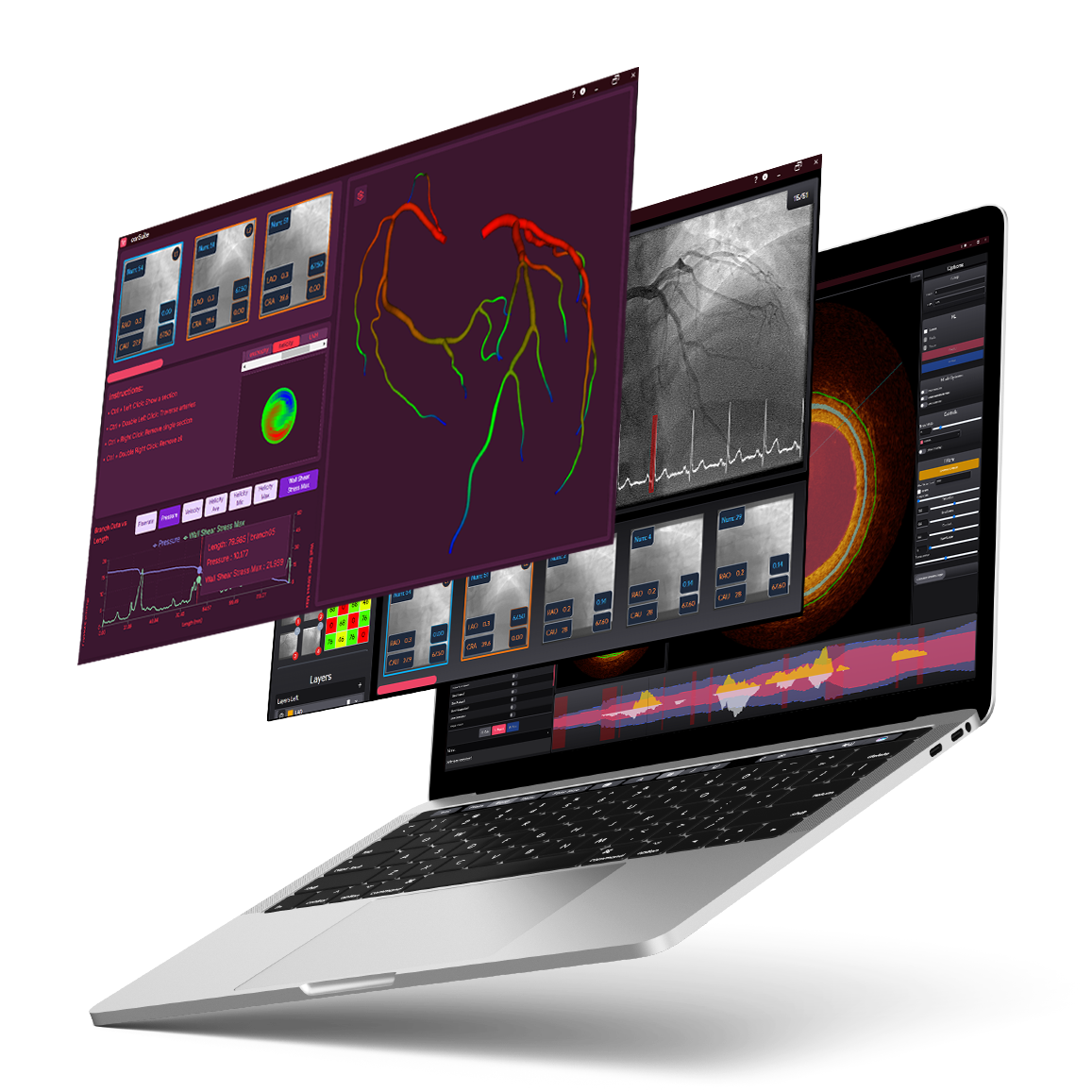corSUITE Multi-Physics
Unlocking Functional Insights from Anatomical Imaging

CREATIVITY & INNOVATION
Non-invasive tools for functional information.
Real world biological systems are dynamic and complex, and anatomical imaging only offers part of the picture. corSUITE Multi-Physics integrates high quality patient specific physiology into digital twin simulations to yield functional information at lower cost and without the procedural risks.
With detailed spatio-temporal output datasets, researchers and commercial partners can study function, “what if” intervention scenarios, and disease progression for individual patients in a controlled and safe environment.
Create a patient-specific virtual replica of coronary arteries to simulate real-time blood flow, plaque progression, and intervention outcomes.
Combine high-fidelity imaging with continuum mechanics models to assess how arteries respond to different physiological conditions.
Model the impact of risk factors on plaque growth, stenosis development, and long-term cardiovascular health for research applications.
Simulate and analyze PCI (Percutaneous Coronary Intervention), stent deployment, and medical device performance in a virtual coronary model.
Validate drug efficacy, new treatment protocols, and AI-based analytics before real-world implementation.
Who Uses corSUITE Multi-Physics?
Biomedical Researchers
Study plaque behavior, hemodynamics, and disease progression using advanced physics-based simulations.
Medical Device & Pharmaceutical Companies
Test and validate new stents, drugs, and cardiovascular therapies in a virtual coronary model before clinical trials.
Academic & Industry Research Teams
Investigate new treatment methodologies and AI-driven risk assessment models using real-world physiological simulations.
Healthcare AI & Data Science Teams
Leverage high-fidelity, physics-based datasets to enhance machine learning models and predictive analytics.
Explore corSUITE Multi-Physics Model today!
The future of coronary research and innovation is predictive, data-driven, and physics-based.
Request a Demo